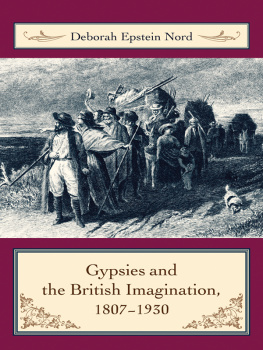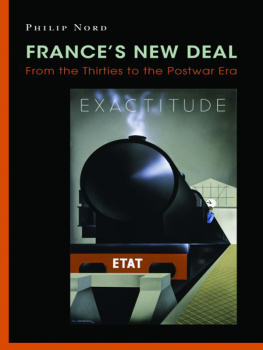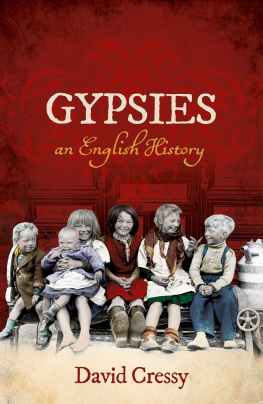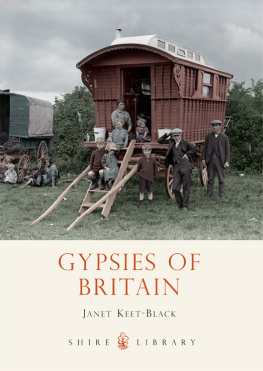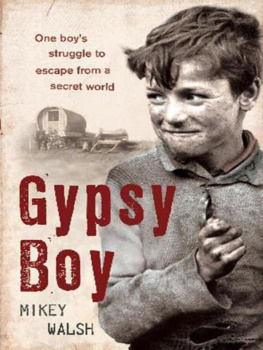Gypsies and the British Imagination
Hubert von Herkomer, A Gipsy Encampment on Putney Common (detail).
Gypsies & the British Imagination, 18071930
Deborah Epstein Nord
Columbia University Press
New York
Columbia University Press
Publishers Since 1893
New York Chichester, West Sussex
cup.columbia.edu
Copyright 2006 Columbia University Press
All rights reserved
E-ISBN 978-0-231-51033-2
Columbia University Press wishes to express its appreciation for assistance given by the University Committee on Research in the Humanities and Social Sciences at Princeton University toward the cost of publishing this book.
Library of Congress Cataloging-in-Publication Data
Nord, Deborah Epstein.
Gypsies and the British imagination, 18071930 / Deborah Epstein Nord.
p. cm.
Includes bibliographical references and index.
ISBN 0-231-13704-4 (cloth : alk. paper)
ISBN 0-231--51033-0 (electronic)
1. English literature19th centuryHistory and criticism.
2. English literature20th centuryHistory and criticism.
3. Outsiders in literature.
4. Romanies in literature. I. Title.
PR468.R63N67 2006
820.9'352991497dc22 2005034050
A Columbia University Press E-book.
CUP would be pleased to hear about your reading experience with this e-book at .
Designed by Lisa Hamm
This one is for my sons, Joseph Solomon Nord and David Epstein Nord
Contents
O NE OF the pleasures that accompanies the completion of a project like this one is the opportunity to thank those people who have supported, encouraged, and contributed to it over a long period of time. I am grateful, first of all, for the ongoing support of the University Committee on Research in the Humanities and Social Sciences at Princeton University, which funded my research for a number of summers and a trip to England in the spring of 2000. In the final stages of writing, a grant from the American Council of Learned Societies enabled me to take a crucial full years leave from teaching to complete my book.
At the Gypsy Collections at the University of Liverpool, Katy Hooper and other staff members welcomed me and helped with valuable research advice. I am grateful for permission to use materials, both manuscripts and photographs, in the Gypsy Lore Collections. At Princeton University, two groups of resourceful graduate students in my seminar Race, Nation, and Englishness, on nineteenth-century literature, inspired my thinking and added fresh insights to my work. I have published very little of what follows in this book, but editors and readers who commented on my article Marks of Race: Gypsy Figures and Eccentric Femininity in Nineteenth-Century Womens Writing, Victorian Studies 41, no. 2 (1998), gave me confidence to pursue this project at an early stage. I have benefited greatly from being able to present some of this work to receptive and critically astute audiences at the Victorian Studies Conference of Western Canada; the North American Conference on British Studies; the conference Locating the Victorians in London; the colloquium Europe and the Gypsies at the State University of New York at Stony Brook; a graduate student and faculty group at Hunter College, New York; a nineteenth-century seminar at the University of Chicago; and the Victorian Colloquium at Princeton.
Colleagues, students, and friends have given me intellectual sustenance: they responded to my work, shared their own with me, and sent Gypsy references my way on a continuing basis. I am grateful for the interest and advice of Carol Armstrong, Daniel Blanton, Natalie Davis, Lou Deutsch, Maria DiBattista, Lisa Fluet, Edward Groth, Ian Hancock, Mary Harper, Richard Kaye, Howard Keeley, Uli Knoepflmacher, Beth Machlan, Peter Mandler, Arno Mayer, Gage McWeeny, Jeff Nunokawa, Susan Pennybacker, Ellen Pollak, Jim Richardson, Eve Rosenhaft, Christine Stansell, Susan Stewart, Lisa Tickner, Katie Trumpener, and Judy Walkowitz. Kate Flint has been a devoted and immeasurably helpful reader and interlocutor. I am also extremely grateful to Michael Ragussis, who read the manuscript with care and intelligence. I am indebted to the work of scholars, especially George Behlmer and David Mayall, who wrote about Gypsies in nineteenth-century Britain long before I began this project. This book stands on the shoulders of their scholarship. At Columbia University Press, Jennifer Crewe has been a highly encouraging and astute editor. I am grateful for her interest in this book and her stewardship of its publication. The illustrations for the book were gathered with the invaluable help of Alexandra Neel. Her excellent eye and intrepid approach to digital reproduction of images have enabled me to give this book an otherwise impossible visual richness.
My most personal debts are a good deal harder to define. I hope it is not too self-indulgent to say that sustaining the career of an academic woman of a certain age and life experience requires the understanding and encouragement of other, like-minded women. I am forever thankful for the friendship of Maria DiBattista, Ellen Pollak, and Chris Stansell. They have been an inspiration to me for many years. The Program in the Study of Women and Gender has been my second home at Princeton, and I am delighted to be able to acknowledge Barbara Gershen, its academic manager and presiding muse. My students in the program have been a gifted and spirited bunch. Finally, I am sustained by a family that combines, in equal parts, great warmth, humor, and intelligence. I dedicate this book to my beloved sons, David and Joseph. My husband, Philip Nord, patient, funny, and wise, continues to be my most resourcefuland certainly my most lovingcritic.

I N 1930, the gypsiologist John Sampson, librarian of the University of Liverpool and leading member of the Gypsy Lore Society, published a volume he had labored over with love for many decades. He called it The Wind on the Heath: A Gypsy Anthology. With its frontispiece a beautifully colored painting by Augustus John ( Readers alert to the Gypsy presence in British texts might not be surprised by the breadth of Sampsons anthology, and students of Victorian literature certainly would find it confirmation of what they already suspected: that the gipsy brat Heathcliff, Matthew Arnolds scholar-gypsy, Edward Rochesters Gypsy masquerade, and Maggie Tullivers defection to a Gypsy camp on the outskirts of town reflect the persistence of a widespread dependence on the tropes of Gypsy life in British writing and culture. And although Sampsons anthology does not make it explicit, Gypsies were an object of fascination not simply for creators of literature throughout centuries, but for ethnographers, historians, philologists, social and legal reformers, graphic artists, and journalists.

